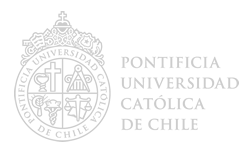New seed collections of North American pitseed goosefoot (Chenopodium berlandieri) and efforts to identify its diploid ancestors through whole-genome sequencing
Abstract
Pitseed goosefoot (Chenopodium berlandieri) is an ecologically diverse wild/weedy North American species within the primary gene pool for improving South American quinoa (Chenopodium quinoa). Both taxa are 36-chromosome allotetraploids with subgenomes AA and BB. The A genome is found in a large number of diploids in the Americas, along with one Northeast Asian taxon, and was recently shown to be the maternal ancestor, while the paternal B genome is closely related to several extant Eurasian diploids. Two of our primary objectives were 1) to determine the extent of genetic diversity in the allotetraploid C. berlandieri-quinoahircinum complex and 2) to characterize the evolutionary path from polyploidization to domestication in these taxa. In an effort to survey genetic diversity, in 2018, we made seed collections of southern Texas, southern Great Plains, and New England coastal ecotypes of C. berlandieri as well as sympatric diploids. With respect to the second goal, we performed wholegenome sequencing of two Sonoran Desert Chenopodium A-genome diploids in subsection Cellulata and Andean cultivated C. pallidicaule in subsection Leiosperma. When paired reads were aligned to the whole-genome reference of C. quinoa strain ‘QQ74’, the match percentages were 99.31, 99.23, and 98.53 for C. watsonii, C. sonorense, and C. pallidicaule, respectively. These data strongly support C. watsonii as being the most closely related of these three species to the A-genome ancestor of quinoa. Ongoing sequencing efforts with a larger panel of diploids are aimed at identifying the maternal ancestor of C. quinoa and C. berlandieri, if extant.
Keywords
Full Text:
PDFDOI: http://dx.doi.org/10.7764/rcia.v46i2.2150

This work is licensed under a Creative Commons Attribution 4.0 International License.

